Ernest Pusateri
Retrieval Augmented Correction of Named Entity Speech Recognition Errors
Sep 09, 2024
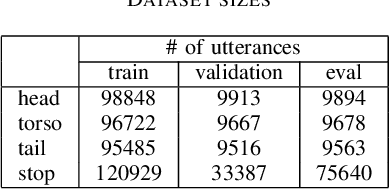

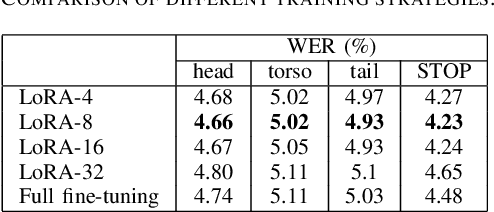
Abstract:In recent years, end-to-end automatic speech recognition (ASR) systems have proven themselves remarkably accurate and performant, but these systems still have a significant error rate for entity names which appear infrequently in their training data. In parallel to the rise of end-to-end ASR systems, large language models (LLMs) have proven to be a versatile tool for various natural language processing (NLP) tasks. In NLP tasks where a database of relevant knowledge is available, retrieval augmented generation (RAG) has achieved impressive results when used with LLMs. In this work, we propose a RAG-like technique for correcting speech recognition entity name errors. Our approach uses a vector database to index a set of relevant entities. At runtime, database queries are generated from possibly errorful textual ASR hypotheses, and the entities retrieved using these queries are fed, along with the ASR hypotheses, to an LLM which has been adapted to correct ASR errors. Overall, our best system achieves 33%-39% relative word error rate reductions on synthetic test sets focused on voice assistant queries of rare music entities without regressing on the STOP test set, a publicly available voice assistant test set covering many domains.
Personalization of CTC-based End-to-End Speech Recognition Using Pronunciation-Driven Subword Tokenization
Oct 16, 2023


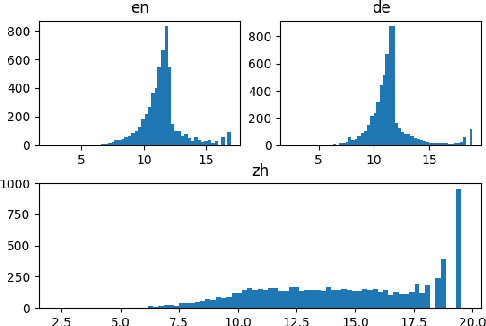
Abstract:Recent advances in deep learning and automatic speech recognition have improved the accuracy of end-to-end speech recognition systems, but recognition of personal content such as contact names remains a challenge. In this work, we describe our personalization solution for an end-to-end speech recognition system based on connectionist temporal classification. Building on previous work, we present a novel method for generating additional subword tokenizations for personal entities from their pronunciations. We show that using this technique in combination with two established techniques, contextual biasing and wordpiece prior normalization, we are able to achieve personal named entity accuracy on par with a competitive hybrid system.
Acoustic Model Fusion for End-to-end Speech Recognition
Oct 10, 2023

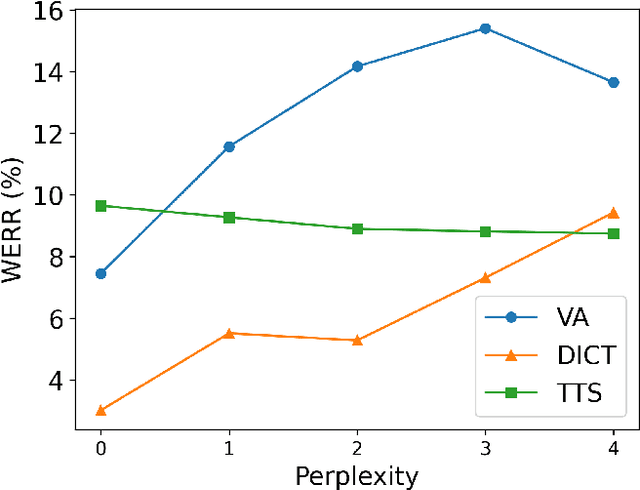

Abstract:Recent advances in deep learning and automatic speech recognition (ASR) have enabled the end-to-end (E2E) ASR system and boosted the accuracy to a new level. The E2E systems implicitly model all conventional ASR components, such as the acoustic model (AM) and the language model (LM), in a single network trained on audio-text pairs. Despite this simpler system architecture, fusing a separate LM, trained exclusively on text corpora, into the E2E system has proven to be beneficial. However, the application of LM fusion presents certain drawbacks, such as its inability to address the domain mismatch issue inherent to the internal AM. Drawing inspiration from the concept of LM fusion, we propose the integration of an external AM into the E2E system to better address the domain mismatch. By implementing this novel approach, we have achieved a significant reduction in the word error rate, with an impressive drop of up to 14.3% across varied test sets. We also discovered that this AM fusion approach is particularly beneficial in enhancing named entity recognition.
Neural Language Model Pruning for Automatic Speech Recognition
Oct 05, 2023Abstract:We study model pruning methods applied to Transformer-based neural network language models for automatic speech recognition. We explore three aspects of the pruning frame work, namely criterion, method and scheduler, analyzing their contribution in terms of accuracy and inference speed. To the best of our knowledge, such in-depth analyses on large-scale recognition systems has not been reported in the literature. In addition, we propose a variant of low-rank approximation suitable for incrementally compressing models, and delivering multiple models with varied target sizes. Among other results, we show that a) data-driven pruning outperforms magnitude-driven in several scenarios; b) incremental pruning achieves higher accuracy compared to one-shot pruning, especially when targeting smaller sizes; and c) low-rank approximation presents the best trade-off between size reduction and inference speed-up for moderate compression.
Space-Efficient Representation of Entity-centric Query Language Models
Jun 29, 2022



Abstract:Virtual assistants make use of automatic speech recognition (ASR) to help users answer entity-centric queries. However, spoken entity recognition is a difficult problem, due to the large number of frequently-changing named entities. In addition, resources available for recognition are constrained when ASR is performed on-device. In this work, we investigate the use of probabilistic grammars as language models within the finite-state transducer (FST) framework. We introduce a deterministic approximation to probabilistic grammars that avoids the explicit expansion of non-terminals at model creation time, integrates directly with the FST framework, and is complementary to n-gram models. We obtain a 10% relative word error rate improvement on long tail entity queries compared to when a similarly-sized n-gram model is used without our method.
A Discriminative Entity-Aware Language Model for Virtual Assistants
Jun 21, 2021
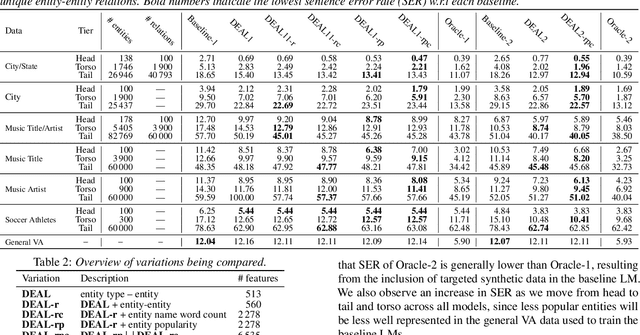
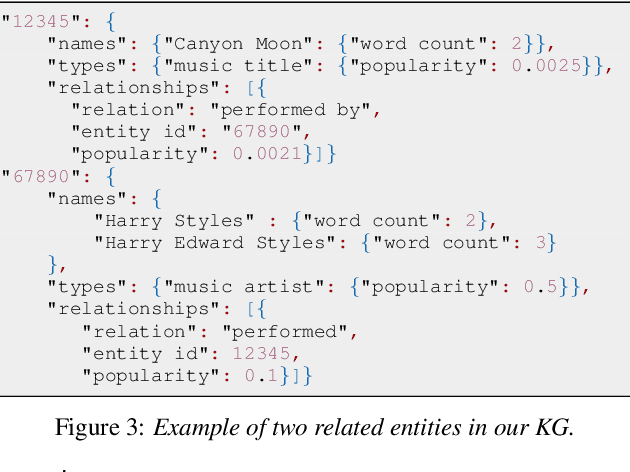
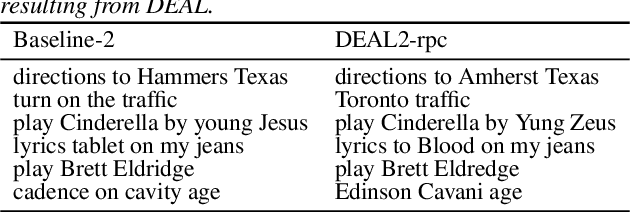
Abstract:High-quality automatic speech recognition (ASR) is essential for virtual assistants (VAs) to work well. However, ASR often performs poorly on VA requests containing named entities. In this work, we start from the observation that many ASR errors on named entities are inconsistent with real-world knowledge. We extend previous discriminative n-gram language modeling approaches to incorporate real-world knowledge from a Knowledge Graph (KG), using features that capture entity type-entity and entity-entity relationships. We apply our model through an efficient lattice rescoring process, achieving relative sentence error rate reductions of more than 25% on some synthesized test sets covering less popular entities, with minimal degradation on a uniformly sampled VA test set.
Error-driven Pruning of Language Models for Virtual Assistants
Feb 14, 2021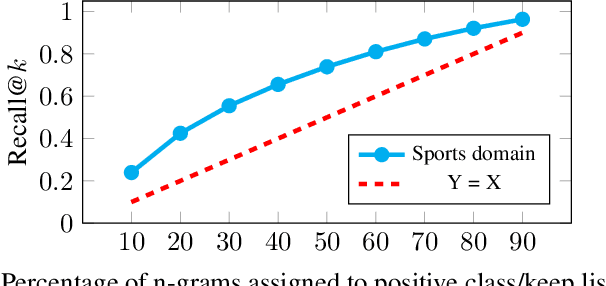

Abstract:Language models (LMs) for virtual assistants (VAs) are typically trained on large amounts of data, resulting in prohibitively large models which require excessive memory and/or cannot be used to serve user requests in real-time. Entropy pruning results in smaller models but with significant degradation of effectiveness in the tail of the user request distribution. We customize entropy pruning by allowing for a keep list of infrequent n-grams that require a more relaxed pruning threshold, and propose three methods to construct the keep list. Each method has its own advantages and disadvantages with respect to LM size, ASR accuracy and cost of constructing the keep list. Our best LM gives 8% average Word Error Rate (WER) reduction on a targeted test set, but is 3 times larger than the baseline. We also propose discriminative methods to reduce the size of the LM while retaining the majority of the WER gains achieved by the largest LM.
Predicting Entity Popularity to Improve Spoken Entity Recognition by Virtual Assistants
May 26, 2020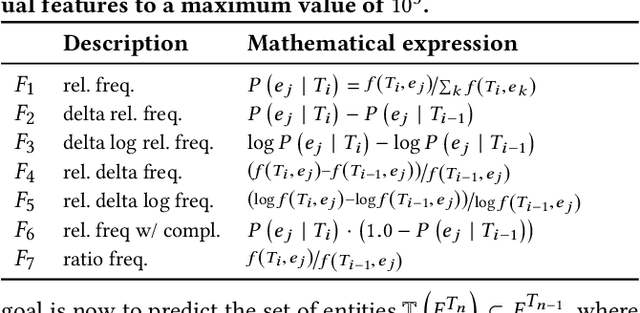
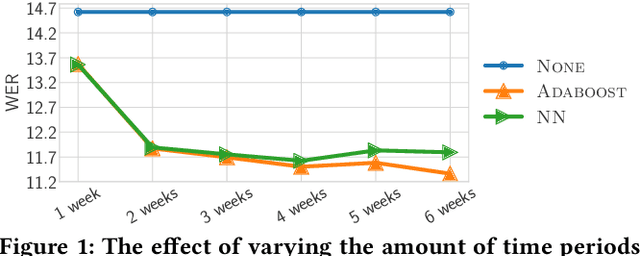
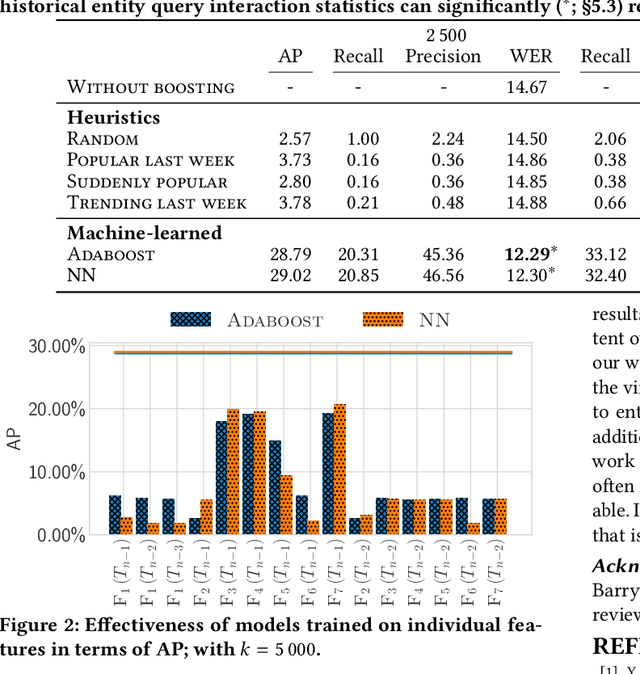
Abstract:We focus on improving the effectiveness of a Virtual Assistant (VA) in recognizing emerging entities in spoken queries. We introduce a method that uses historical user interactions to forecast which entities will gain in popularity and become trending, and it subsequently integrates the predictions within the Automated Speech Recognition (ASR) component of the VA. Experiments show that our proposed approach results in a 20% relative reduction in errors on emerging entity name utterances without degrading the overall recognition quality of the system.
Connecting and Comparing Language Model Interpolation Techniques
Aug 26, 2019


Abstract:In this work, we uncover a theoretical connection between two language model interpolation techniques, count merging and Bayesian interpolation. We compare these techniques as well as linear interpolation in three scenarios with abundant training data per component model. Consistent with prior work, we show that both count merging and Bayesian interpolation outperform linear interpolation. We include the first (to our knowledge) published comparison of count merging and Bayesian interpolation, showing that the two techniques perform similarly. Finally, we argue that other considerations will make Bayesian interpolation the preferred approach in most circumstances.
 Add to Chrome
Add to Chrome Add to Firefox
Add to Firefox Add to Edge
Add to Edge